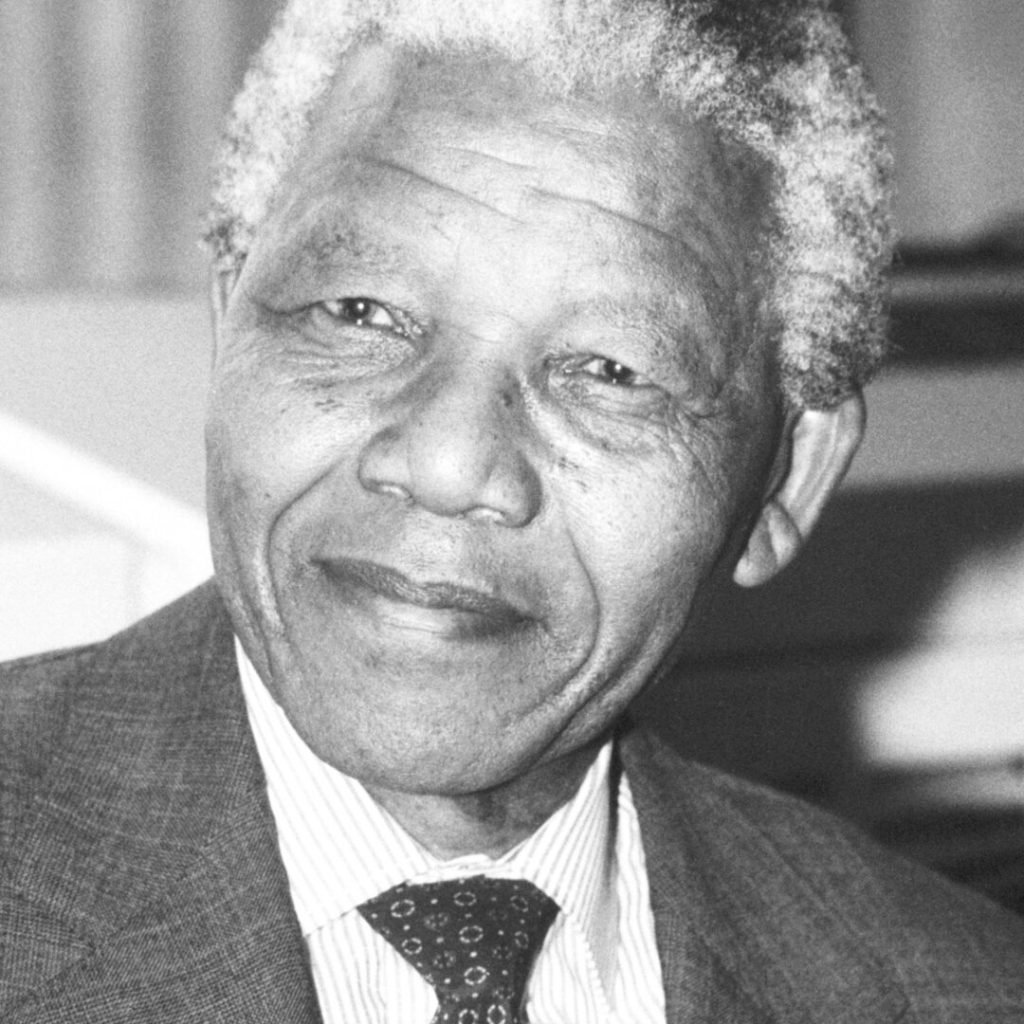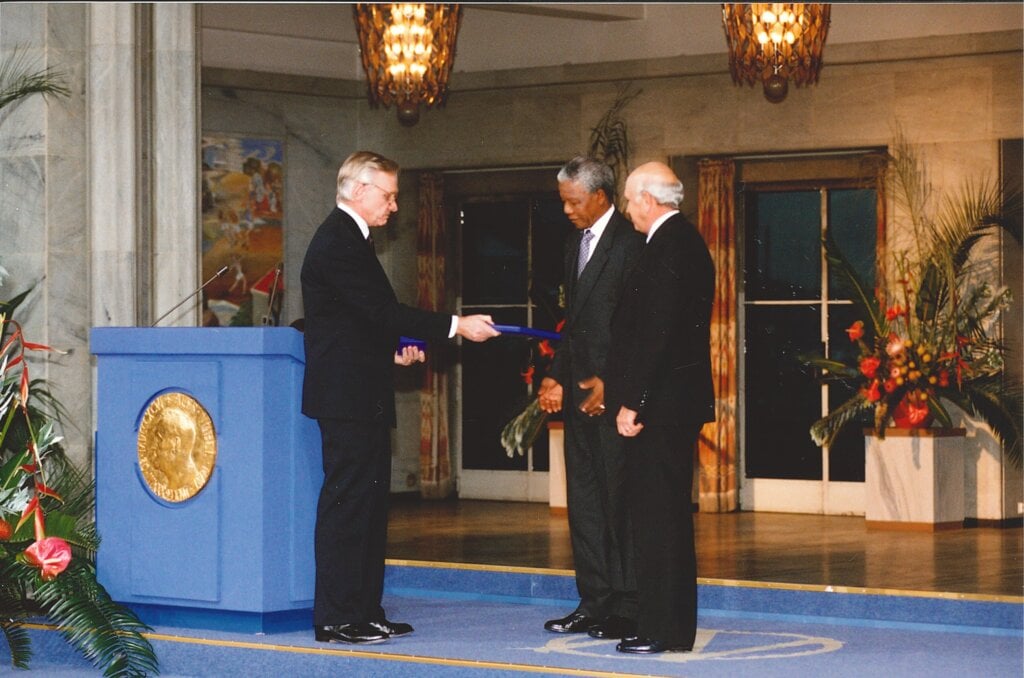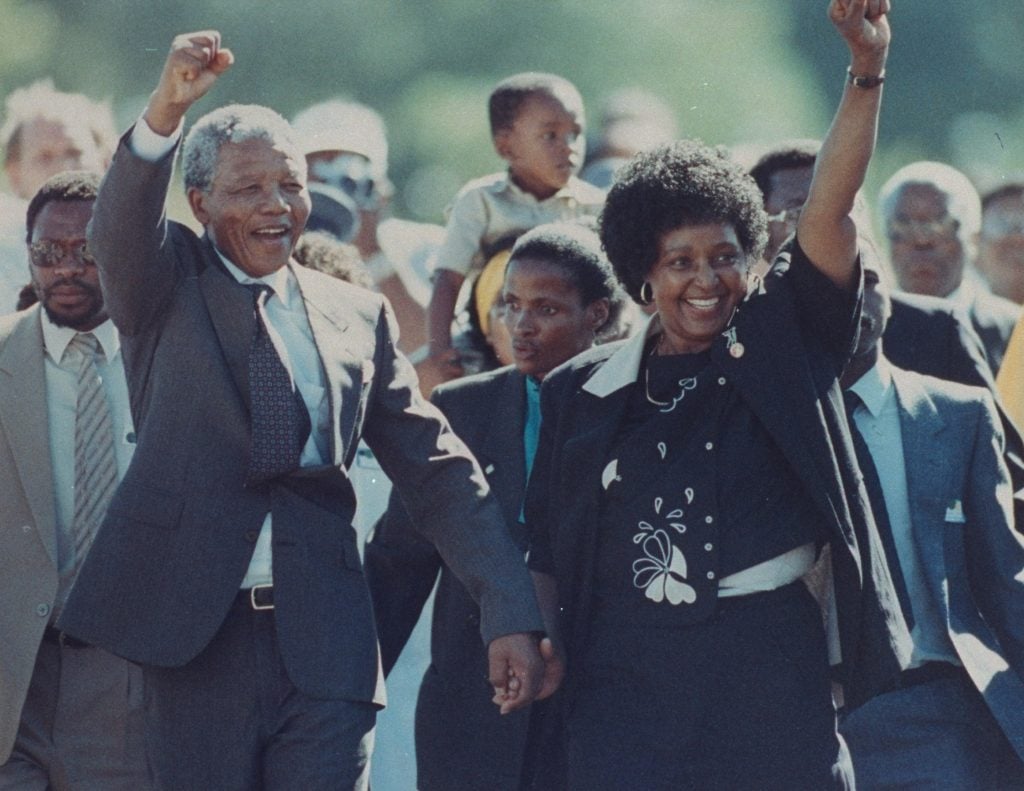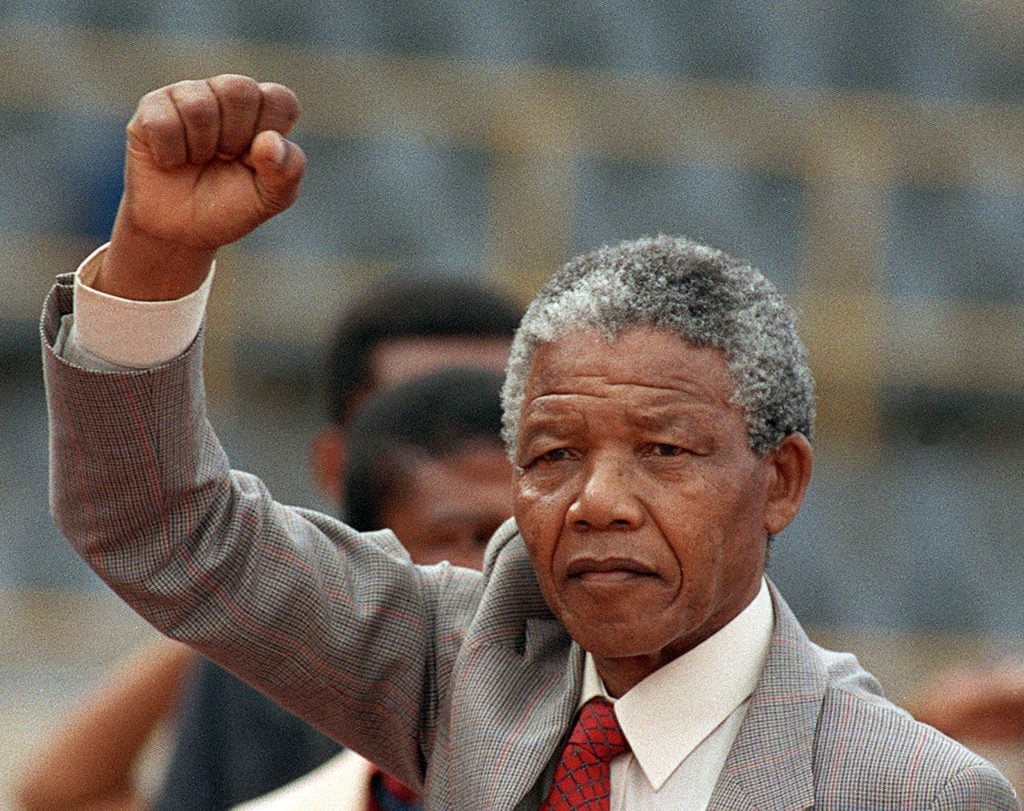Nelson Mandela
Speed read
Nelson Mandela was awarded the Nobel Peace Prize, jointly with Frederik Willem de Klerk, for his work for the peaceful termination of the apartheid regime, and for laying the foundations for a new democratic South Africa.

Full name: Nelson Rolihlahla Mandela
Born: 18 July 1918, Mvezo, South Africa
Died: 5 December 2013, Johannesburg, South Africa
Date awarded: 15 October 1993
Africa’s unrivalled symbol of freedom
The refrain of “Free Nelson Mandela!” resounded among opponents of South Africa’s system of racial segregation while Africa’s foremost champion of freedom was imprisoned. Son of a village chief, the black lawyer Nelson Mandela was interned from 1962 until 1990 for leading the African National Congress (ANC) liberation movement in its armed struggle against apartheid. In prison Mandela became a unifying figure for the oppressed peoples of South Africa. Unwaveringly he pursued the goal of liberty for all until the white racist regime released him and agreed to negotiate. Nelson Mandela shared the peace prize with the man who had ordered his release, President Frederik Willem de Klerk. These former adversaries now agreed on a peaceful transition to a system of majority rule. From 1994 to 1999 Mandela was president of South Africa.
"He spoke with a moral authority and in a constructive tone that made a profound impression."
- Francis Sejersted, Presentation speech, 10 December 1993.

Nelson Mandela as a guerrilla leader
In 1960, South African police massacred 69 black demonstrators at an anti-apartheid protest in Sharpeville. That incident spurred the ANC liberation movement to engage in armed struggle against the white minority rule. Nelson Mandela, lawyer and son of a village chief, was chosen to lead the covert guerrilla organisation ‘Spear of the Nation’. Inspired by wars of liberation in Algeria and on Cuba, power lines and railways were bombed. In 1962 Mandela was arrested by the authorities, and two years later he was sentenced to life imprisonment.
"Nelson Mandela was the jailed symbol of the struggle to end apartheid in South Africa. Ten years after his release, he symbolizes peace and reconciliation to the entire world."
- The Norwegian newspaper 'Dagbladet', 16 February 2000.
The world’s most famous prisoner
In 1964 Nelson Mandela, the military leader of the ANC liberation movement, was sentenced to life imprisonment for treason and conspiracy against the South African regime. Until 1982 he was interned on Robben Island, off Cape Town. During these years he emerged as the foremost symbol of the struggle against apartheid both at home and abroad. In 1982 Mandela was transferred to a prison on the mainland, where he entered into negotiations with the white minority government on the future of South Africa. These talks continued until 1990, when he was granted an unconditional release.
| Robben Island Island located 12 km from Cape Town, off the coast of South Africa. Used as a prison camp from the 1600s. Peace laureate Nelson Mandela was incarcerated on the island from 1962 to 1984. |

Nelson Mandela as a statesman and a symbol of peace
President F. W. de Klerk and Nelson Mandela planned the transition to democracy in South Africa. For their efforts they were named co-recipients of the Nobel Peace Prize. The ANC liberation movement won the 1994 parliamentary elections. Mandela became president and presided over the construction of democracy. At the same time, he shed light on the truth about apartheid. Through his policy of reconciliation he strengthened the belief in a South Africa for all ethnic groups. Mandela did not cling to power, but retired with honour in 1999. At the turn of the century he was indisputably the world’s foremost symbol of peace and reconciliation.

South Africa after apartheid
In 1994 the ANC swept to power in South Africa. The country adopted a new constitution granting equal rights for all. Under President Nelson Mandela’s leadership, a democratisation process was launched. The Commission for Truth and Reconciliation addressed injustices wrought in the name of apartheid, and many poor people gained access to electricity and clean water. Yet serious problems remain: South Africa continues to fight high unemployment and crime rates, and millions of South Africans are infected with HIV. The gap between rich and poor persists, the whites control the economy, and demands for land reform have not been met.
| The Truth and Reconciliation Commission Formed in 1996 in South Africa to promote reconciliation between ethnic groups after the policy of racial segregation was abolished. Through public hearings, the Commission exposed abuses committed by the apartheid regime. |
Disclaimer: Every effort has been made by the publisher to credit organisations and individuals with regard to the supply of photographs. Please notify the publishers regarding corrections.
Learn more
Nelson Rolihlahla Mandela was born in Transkei, South Africa on July 18, 1918. His father was Hendry Mphakanyiswa of the Tembu Tribe ...
Nobel Prize lecture
Read Nelson Mandela's Nobel Prize lecture held in Oslo, Norway on 10 December 1993.
Nelson Mandela delivering his Nobel Lecture.
© Knudsens fotosenter/Dextra Photo, Norsk Teknisk Museum.
Nobel Prizes and laureates
See them all presented here.
